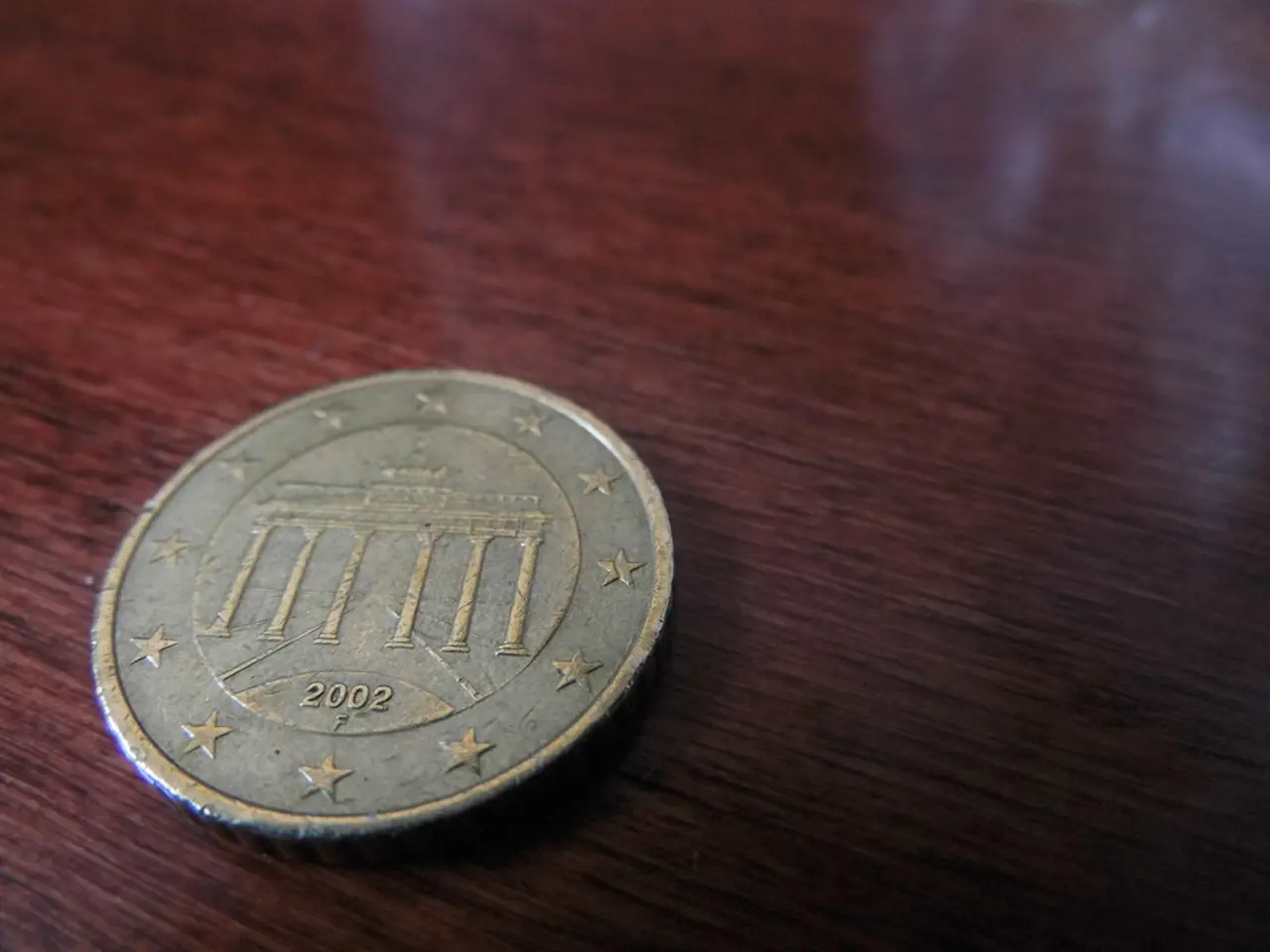Indian currency, the Rupee, experiences a 16 paise rise; focus intensifies on the India-US trade agreement
The Indian rupee experienced a 16 paise appreciation against the US dollar on Tuesday, reaching 85.70, as optimism around a potential mini trade deal with the US fuelled investor confidence. However, experts warn that the short-term positive movement may not be sustainable in the long term.
Ritesh Bhansali, director of Mecklai Financial Services, believes that the high possibility of a mini trade deal has kept the rupee very range-bound and caused some marginal appreciation. The deal, which involves tariff reductions on certain US industrial goods and Indian labour-intensive sectors like textiles and leather, is expected to foster increased bilateral trade activity.
By potentially reducing some tariffs, especially on US imports to India, the deal may encourage greater trade volumes and investment flows between the two countries, supporting demand for the Indian rupee. The deal also aims to provide interim relief by avoiding or rolling back the 26% reciprocal tariffs scheduled to take effect, which if left in place, could have harmed exports and dampened investor sentiment.
The long-term implications of the mini trade deal are generally positive but nuanced. Increased trade and investment ties with the US could lead to more foreign direct investment (FDI) and portfolio inflows, underpinning the rupee's stability or appreciation over the long term. However, the deal is limited and preliminary, and its impact will be moderate initially and will grow if followed by a more comprehensive trade framework.
Forex traders see the domestic currency trading in the range of 85-86.50 against the dollar in the near-term. To curb excess volatility, the Reserve Bank of India (RBI) is likely to intervene on both sides. The RBI's short forward book, currently at $65.2 billion, is likely to prevent the rupee from more appreciation compared to other Asian currencies, making it a median performer among its peers.
However, global uncertainty is weighing on the rupee in the near-term, according to Dilip Parmer, research analyst at HDFC Securities. The Philippine pesso gained 0.60% on Tuesday, making it the best performing Asian currency, while the South Korean won was the second best performing, with a gain of 0.41%.
In summary, the mini trade deal is likely to be a positive catalyst for the Indian rupee in the long term by lowering trade barriers, improving bilateral trade flows, and reducing tariff-related uncertainties. However, since it is an interim agreement excluding major sectors, its impact will be moderate initially and will grow if followed by a more comprehensive trade framework. The rupee may benefit from enhanced trade and investment confidence, but these effects will unfold progressively as the deal's details and further negotiations materialize.
- The deal may encourage greater trade volumes and investment flows between India and the US, supporting demand for the Indian rupee in the market.
- By potentially reducing some tariffs, the mini trade deal aims to underpin the rupee's stability or appreciation over the long term, making it a median performer among its peers in foreign exchange (forex) trading.
- In personal-finance terms, the mini trade deal, if followed by a more comprehensive trade framework, could lead to increased foreign direct investment (FDI) and portfolio inflows, which could be beneficial for one's investment portfolio in the business sector.
- The volatility in the rupee's exchange rate against the US dollar might be curbed by the Reserve Bank of India (RBI) intervening on both sides to prevent excess volatility.
- Despite the positive impacts of the mini trade deal, global economic uncertainty is still weighing on the rupee in the short term, as seen in the performance of other Asian currencies like the Philippine pesso and South Korean won.




